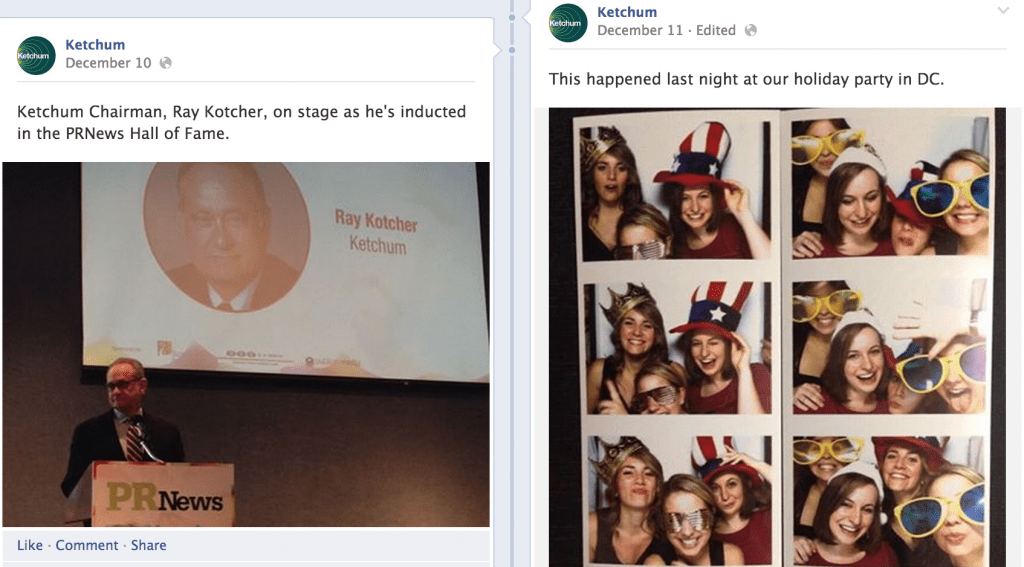What’s showing up in your Facebook newsfeed? Updates from your friends?Baby pictures? Someone met Chuck Norris at the mall? Chances are you’re seeing more and more branded content from businesses you don’t follow and promoted content from those that you do. You’re likely seeing dramatically less from the brands who aren’t promoting their content too. You’re not alone. Recent strategic algorithm changes by Facebook have decreased the organic reach of brand content in favor of promoted or paid content.
The newsfeed is the core communications real estate for brands to reach consumers on Facebook. After a consumer initially becomes a fan of your brand page, we know that fan is not likely to return to your page on a regular basis; if your branded content is not showing up in the newsfeed its out of sight/out of mind.

Facebook once said that brand posts reach approximately 16% of their fans (which isn’t great but understandable considering the very crowded landscape). That number is no longer achievable for many brands, and Ignite analysis shows that roughly 2.5% is now more likely for standard posts on large pages (click to tweet). So, brands have gone from typically reaching 16 in 100 to now roughly 3 in 100 fans with each post that doesn’t get amplified with some kind of paid support. That’s tough news for brands who have spent a lot of time and energy building their communities organically especially since this same Ignite research found that organic content leads to better buying actions.
We may not like the new rules of the game, but can Brands, marketers and Community Managers afford to walk away from Facebook as a consumer communications channel? Paid Facebook amplification is still a prudent way to introduce your content to new audiences and engender more conversation. In fact, according to Neilson Brand Effect norms in May 2012, FB Ad recall performed almost 50% better than traditional online advertising.
So we may not be walking away from Facebook anytime soon, but Brands will be wise to diversify their owned social media footprints so that if Facebook keeps ratcheting up the cost to reach “fans,” a Brand can turn to other viable communities. Not only does Pinterest user-ship continue to grow, but Pinterest has been busy this season introducing a whole host of new functionality including price-tracking, Article Pins, Place Pins, and more. Instagram recently launched their own paid product with sponsored posts and just last week added a functionality to allow users (including Brands) to send private messages to single users or small groups of friends. Both Instagram and Twitter are actively going after younger users – tweens and teens – as this demographic backs away from Facebook. Twitter has also introduced a new suite of paid products to capitalize on the insight that 95% of all social conversation around television now takes place on Twitter. So while Facebook is the biggest game in town, it certainly isn’t the only place to play.
If your Brand hasn’t sat down recently to reevaluate their social media strategy, the time to do so is now; the dollars you were spending six months ago are no longer providing you the same value today. A strong go-forward strategy will include not only diversifying platforms, but also recommitting to a healthy dose of both organic and paid content for Facebook.
At Ketchum Digital, we always encourage brands to build loyalty with audiences by being relevant and valuable – that hasn’t changed. A strategic content mix introduces your brand promise through paid reach and sustains the relevancy and value though engaging organic content. At the end of the day, consumers want to see the fun, exciting and personally appropriate content that organized and expanded their Facebook ecosystem originally — not just the brands that pay the most to reach them. Where’s the social in that?
Nancy Martira also contributed to this post.


